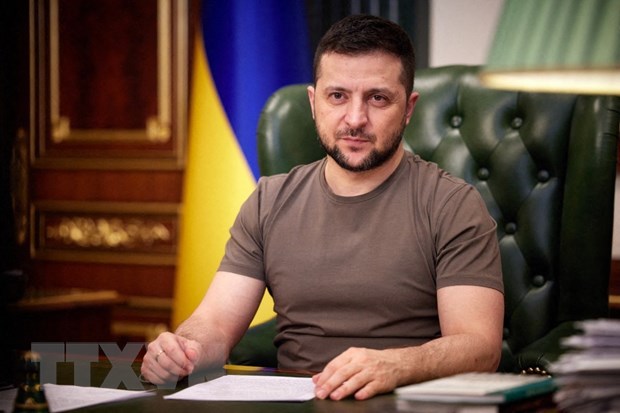For many years, the inhabitants of the tree-lined town of Cochem in western Germany, unknowingly, were living on a “gold mine”.
During the Cold War, the central bank of the West German government kept cash equivalent to nearly 15 billion marks ($2.7 billion) in a 1,500-square-foot nuclear bomb bunker beneath the town of Cochem in Rhineland region.
The currency, code-named “BBK II”, was heavily guarded for prevention purposes should the West German monetary system be hacked. After the Cold War, the bunker was transferred to a joint stock bank in the region and then to a real estate fund.

Tunnel leads to the bunker. Image: AFP
In 2016, German couple Manfred and Petra Reuter bought the bunker and turned it into a museum. After Russia launched a military campaign in Ukraine recently, causing much instability in the security situation in Europe, some people became interested in the bunker.
“A lot of people know we have a safe bunker and ask if there’s room for them to hide in case of an emergency,” said Petra Reuter. “When visiting the bunker, they often ask about the current situation in Europe. I feel like I am reliving 60 years ago, the fear is the same.”
Stepping through the heavy iron door is a long corridor leading to the disinfection chamber and the office equipped with typewriters and desk phones. The main room consists of 12 cages, which house about 18,300 boxes containing millions of 10, 20, 50 and 100 mark bills that have been stacked up to the ceiling for nearly 25 years.

Banknotes in denominations of 10, 20, 50 and 100 mark. Image: AFP
The front of the note was similar to the mark in circulation at the time, but the back was different. Starting in 1964, hundreds of trucks transported the money to the vault over the course of 10 years without a doubt, including East German security forces.
The entrance to the bunker is through a secret tunnel from what appears to be the German central bank’s staff development and training center in a residential part of town.
“People in the town were shocked when they heard about the hoard hidden under their houses,” said Wofgang Lambertz, the former mayor of Cochem, which has a population of about 5,000.
In addition to the 15 billion mark hidden in this bunker, Germany also stored nearly 11 billion mark in cash in the vault of the central bank in Frankfurt. The total amount of money stashed was roughly equal to the amount of cash in circulation in the German economy in 1963.

Model of a money box in a secret bunker in the town of Cochem. Image: AFP
Perhaps this was an extreme precaution against a hypothetical attack, but West German authorities have learned from history. During World War II, Nazi Germany launched “Operation Bernhard”, forcing prisoners in concentration camps to produce counterfeit British pounds with the aim of causing damage to the British economy.
“The most likely explanation is probably the fear that counterfeit money will be smuggled in to damage the West German economy,” said Bernd Kaltenhaueser, president of the Bundesbank’s Rhineland-Palatinate and Saarland regional office. .
“Nowadays, it doesn’t make sense to create a backup currency because now there are fewer counterfeits circulating, fewer people paying in cash,” Kaltenhaueser added.
During the 1980s, as the Cold War subsided and technology developed, these altcoins no longer conformed to German security standards. By 1989, when the Berlin Wall fell, most of the backup banknotes had been taken from the bunker, shredded, and destroyed.
Hong Hanh (According to AFP)
at Blogtuan.info – Source: vnexpress.net – Read the original article here

![[Infographic] World Oceans Day 8/6: Importance and status of the oceans 5 [Infographic] World Oceans Day 8/6: Importance and status of the oceans](https://vtv1.mediacdn.vn/fb_thumb_bn/2022/6/8/vnapotalngaydaiduongthegioi86tamquantrongvathuctrangcuadaiduong-1654680908648810710475-crop-1654680934262272706029-crop-1654680950682293810154.jpg)
